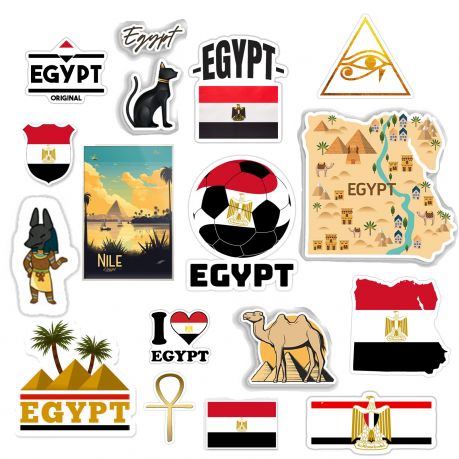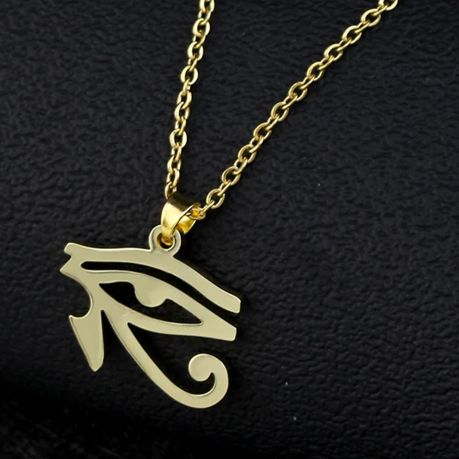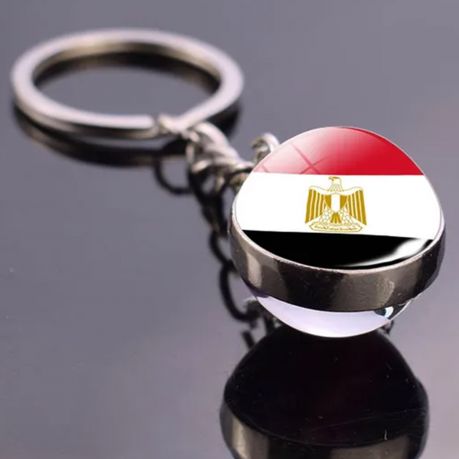Most expensive Egyptian player transfers

Egyptian football: a passion measured in millions
The Nile is not Egypt's only treasure. The country of the Pharaohs has also given birth to exceptional footballing talents, whose exploits thrill an entire people. Among the most spectacular testimonies of this passion, the transfers of players to foreign clubs, which sometimes reach astronomical sums.
In this article, we will explore the most expensive transfers in Egyptian football history. We'll delve behind the scenes of these extraordinary transactions to understand the motivations and implications. In the background, the evolution of Egyptian football and its ambitions for the future can be seen.
So, let yourself be carried away by the story of these transfers that shake up the transfer window and discover the resounding impact of the Pharaohs on the international football market.
The most expensive transfers in history
1. Mohamed Salah: from Basel to Chelsea (2014) – 17 million euros
The “King of Egypt” began his meteoric rise in Europe with this transfer to Chelsea. Still young and promising, he was able to establish himself in the Premier League and become one of the best players in the world. This transfer marked a turning point in his career and allowed Basel to achieve significant added value.
2. Mohamed Elneny: from El Mokawloon to Arsenal (2016) – 15 million euros
The move came as a surprise to many, but Elneny quickly earned a place in the Arsenal squad. His contribution as a combative defensive midfielder and his versatility were appreciated by Arsène Wenger. This transfer also allowed El Mokawloon to achieve a nice financial coup.
3. Mahmoud Trezeguet: from Al Ahly to Anderlecht (2018) – 10 million euros
Nicknamed “Trezeguet” in homage to the former French player, he confirmed his talent in Belgium. His dribbling and speed have made him an important part of Anderlecht. Al Ahly also took advantage of this transfer to replenish its coffers.
4. Mohamed Magdy Afsha: from Al Ahly to Al Hilal (2022) – 7 million euros
This transfer caused a sensation in Egypt. Afsha, one of the most popular players in the country, has decided to take on a new challenge in Saudi Arabia. Al Ahly lost a talented player, but made a good sale.
5. Ahmed Hegazy: from Al Ahly to West Bromwich Albion (2017) – 5 million euros
The "General" became the first Egyptian player to play in the Premier League. His defensive solidity allowed West Bromwich to strengthen. Al Ahly once again benefited from great added value.
Analysis and impact
These transfers demonstrate the growing talent of Egyptian players and the growing attractiveness of Egyptian football. They allow players to flourish in foreign clubs and develop their potential. Egyptian clubs, for their part, can earn significant revenues and invest in their development.
However, these transfers can also have negative effects. The departure of talented players can weaken Egyptian clubs and prevent them from competing with foreign clubs. In addition, the astronomical sums at stake can create distortions in the transfer market and accentuate inequalities between rich and poor clubs.
The most expensive Egyptian player transfers in history are a fascinating phenomenon that reflects the evolution of Egyptian football. They provide opportunities for players and clubs, but also raise important questions. The future of Egyptian football will depend on its ability to manage the positive and negative effects of these transfers.
Note that:
-
This list is not exhaustive and may be supplemented by other important transfers.
-
Transfer amounts may vary depending on sources.
Trends and analyzes
1. Transfer trends
In recent years, there has been an increase in the number of transfers of Egyptian players to foreign clubs. The most popular destinations are European clubs, particularly in England, Belgium and Turkey. Persian Gulf clubs also attract many Egyptian players.
2. Factors influencing transfer prices
A player's price is influenced by several factors, such as:
-
Player age: Younger players are generally more expensive than older players.
-
The player's talent: Talented and promising players have a higher value.
-
Player's track record: players who have won titles and awards are more expensive.
-
Player position: Players playing in key positions, such as strikers and attacking midfielders, are generally more expensive.
-
The market context: Transfer prices may vary depending on market supply and demand.
3. Implications of player transfers
Player transfers can have positive and negative implications for Egyptian football.
Positive aspects:
-
Players can flourish in foreign clubs and develop their potential.
-
Egyptian clubs can earn significant revenues and invest in their development.
-
Egyptian football is gaining visibility and attractiveness on an international scale.
Negative aspects:
-
The departure of talented players can weaken Egyptian clubs and prevent them from competing with foreign clubs.
-
The astronomical sums at stake can create distortions in the transfer market and accentuate inequalities between rich and poor clubs.
-
The development of Egyptian football may become dependent on player transfers, which could weaken the system.
4. Ethical issues and challenges
Player transfers also raise significant ethical questions and challenges.
-
Player exploitation: some players may be victims of exploitation by unscrupulous agents or clubs.
-
Money laundering: Player transfers can be used to launder money.
-
Corruption: Corruption can influence transfer decisions.
Player transfers constitute an important element in the development of Egyptian football. It is important to maximize the positive aspects and minimize the negative aspects of these transfers. For this, it is necessary to put in place strict regulations and controls. Egyptian football has all the potential to become a major force on the international scene, but it must guard against the dangers that threaten its development.
Future prospects
1. Potential markets
Egyptian players have the potential to establish themselves in the best clubs in the world. Potential markets for Egyptian players include:
-
Europe: the championships of England, Spain, Italy, Germany and France remain the most attractive for talented players.
-
The Persian Gulf: Persian Gulf clubs attract many Egyptian players with significant financial offers.
-
Africa: Egyptian clubs can become launch platforms for African players towards foreign clubs.
2. Maximize the benefits of transfers
To maximize the benefits of player transfers for Egyptian football, it is important to:
-
Implement quality training: It is essential to develop talented players from a young age.
-
Develop infrastructure: Egyptian clubs must invest in modern infrastructure to offer players an optimal working environment.
-
Establish good governance: it is necessary to put in place transparent rules and procedures to manage player transfers.
-
Protect players: It is important to protect players from exploitation and abuse.
The future of Egyptian player transfers is bright. The talent of Egyptian players and the growing attractiveness of Egyptian football bode for a bright future. By taking the necessary steps to maximize the benefits of transfers and minimize the risks, Egyptian football can leverage this financial windfall to grow and become a major force on the international stage.
In conclusion, player transfers constitute a major issue for the development of Egyptian football. It is important to seize the opportunities offered by these transfers while managing the potential risks. By making the right decisions, Egyptian football can write a glorious future.
Key points of the article:
-
The most expensive Egyptian player transfers in history illustrate the growing talent of the country's players and the growing attractiveness of Egyptian football.
-
These transfers can have positive and negative effects on Egyptian football.
-
It is important to maximize the benefits of transfers and minimize the risks.
-
The future of Egyptian player transfers is bright, but it is important to make the right decisions so that Egyptian football can take advantage of this financial windfall to develop and become a major force on the international scene.
Importance of player transfers:
Player transfers constitute an important element in the development of Egyptian football. They allow players to flourish in foreign clubs and develop their potential. Egyptian clubs, for their part, can earn significant revenues and invest in their development.
Discussion and opinions:
I invite readers to share their opinions on Egyptian player transfers. What are your expectations for the future? How can Egyptian football maximize the benefits of transfers and minimize the risks ?
In conclusion, player transfers constitute a major issue for the development of Egyptian football. It is important to seize the opportunities offered by these transfers while managing the potential risks. By making the right decisions, Egyptian football can write a glorious future.











